If you’re looking to upgrade your PC, a good graphics card will definitely do the trick. But if you’re on a budget, you could be tempted to check out some of the older cards on the market. They still pack a punch and can handle most modern games to a certain extent. But are they worth it in 2023?
Two viable options are the AMD Radeon RX 580 and the Nvidia GeForce GTX 1060. In this RX 580 vs GTX 1060 comparison, I’ll walk you through their specs, capabilities, current pricing and availability. You’ll be able to make an informed decision and find “good” deals through this article (filtered from all the overpriced deals). Just don’t get your hopes up too high.
RX 580 vs GTX 1060 – Quick Comparison
| RX 580 | Specs | GTX 1060 |
|---|---|---|
| Polaris 20 XTX (215-0910038) | GPU | GP106 (-400-A1) |
| PCIe 3.0 x16 | Interface | PCIe 3.0 x16 |
| 2304 | Cores | 1280 |
| 144 | TMUs | 80 |
| 1257 MHz | Base Clock (Founders Edition) | 1506 MHz |
| 1340 MHz | Boost Clock (Founders Edition) | 1709 MHz |
| 8 GB GDDR5 & 4 GB GDDR5 | Memory | 6 GB GDDR5 & 3 GB GDDR5 |
| 2000 MHz (8 Gbps effective) | Memory Speed | 2002 MHz (8 Gbps effective) |
| 256.0 GB/s | Bandwidth | 192.2 GB/s |
| 256-bit | Memory Bus | 192-bit |
| 185 W | TDP (Founders Edition) | 120 W |
| 450 W | Required PSU (Founders Edition) | 300 W |
| 1x HDMI 2.0b3x DisplayPort 1.4a | Outputs | 1x DVI1x HDMI 2.03x DisplayPort 1.4a |
Radeon RX 580
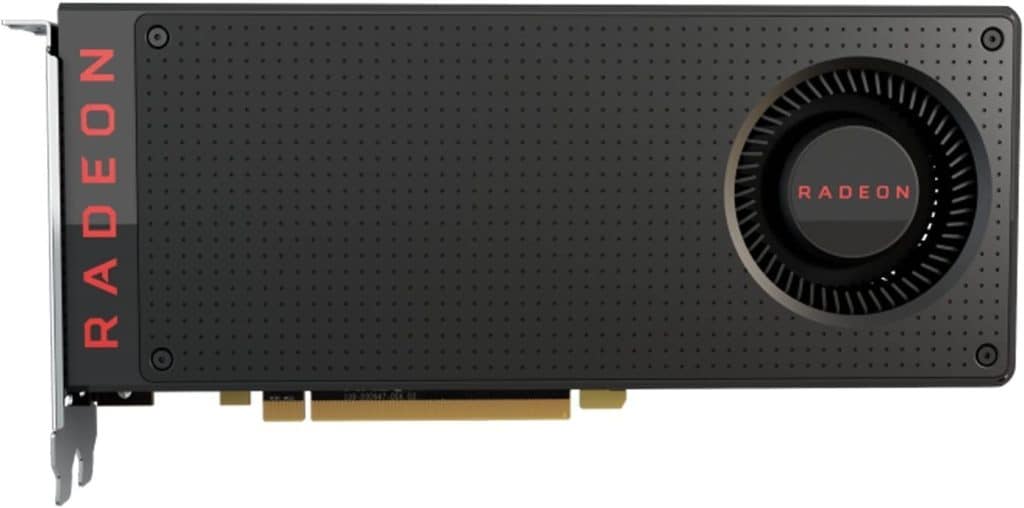
AMD’s RX 580 hit the market in April 2017. It was built on the (then) latest AMD architecture — Polaris, featuring fourth-generation GCN (Graphics CoreNext) cores, HBM2 (High Bandwidth Memory), and upgrades to basically every component compared to the previous generation. It was 4K and VR ready and featured an HDMI 2.0b port and three DisplayPorts.
This mid-range card from AMD (a Silicon Valley company with over 50 years of experience) offered marginally better Fps performance than the competition. Its DirectX 12 support meant it could handle every modern game, even to this day.
Pros:
- Slightly better performance
- More VRAM
- More cores
- Cheaper MSRP
Cons:
- Higher TDP
- Heats up more
GeForce GTX 1060
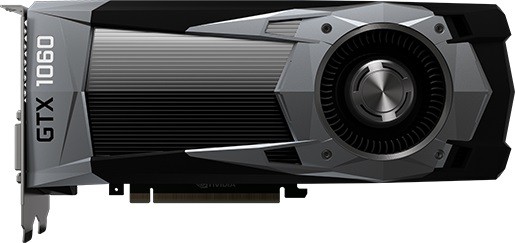
Nvidia released the GTX 1060 in July 2016 as the third Pascal GPU. This was a mid-range card even then, released after the high-end cards from the GTX 1000 series. In 2022, it’s the No.1 card used by Steam users, meaning it’s still pretty popular with gamers. The RX 580 isn’t even in the top 20.
Nvidia has been at the top of the GPU market for years, although its dominance was always more in the high-end range, while AMD (at the time) catered better to mid and low-range needs and prices.
Pros:
- Higher clock speeds
- Lower TDP
- Better pixel rate
- DirectX Raytracing update
Cons:
- Fewer cores
- Less VRAM
GTX 1060 vs RX 580: Key Specifications
Architecture
AMD Polaris
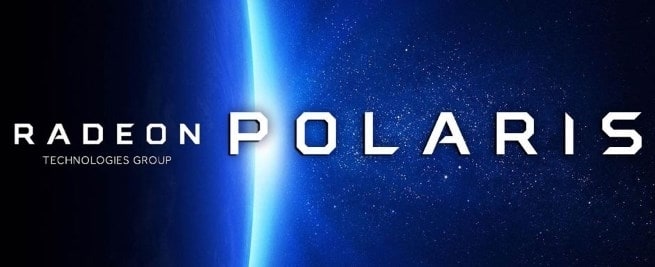
Essentially, the Polaris architecture used in the RX 500 series was the same as its predecessor, except that it utilized improvements in manufacturing which allowed for higher clock speeds and better performance. While Polaris could support VR, HDR, and DirectX 12, it lacked further updates to support newer tech, such as ray tracing. AMD fans had to wait for the NAVI 2 GPU (RX 6000) series for that.
Nvidia Pascal
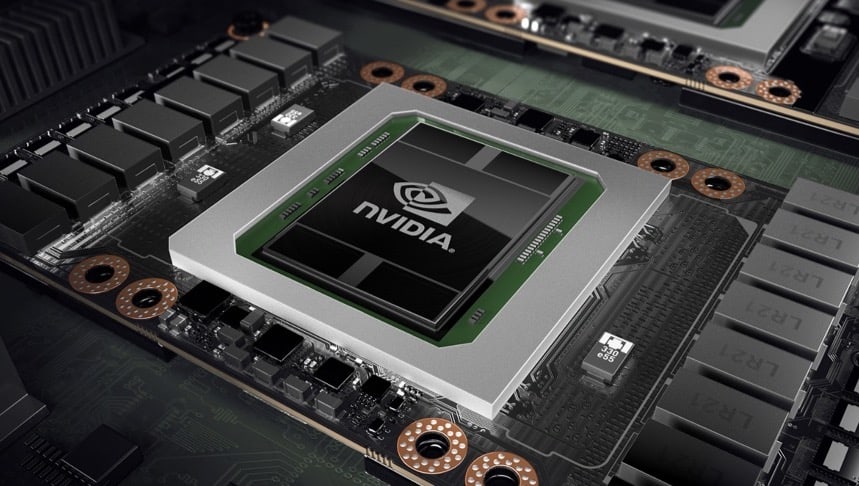
Pascal was designed when Nvidia was already moving away from GPUs made only for gamers and toward systems designed to cater to deep learning and AI development. In 2019, Nvidia enabled a software update for the GTX 1060 6GB, which allowed it to use DirectX Raytracing, a feature only present in later RTX (Turing) cards until the update.
Winner: GTX 1060
Read Also: Differences between GTX and RTX Explained
Clock Speeds & Overclocking
Clock speed is the frequency at which your GPU operates. Contemporary cards have a base clock at which they operate when under low loads and a boost clock speed for when they need more power. You can overreach these speeds through overclocking.
| RX 580 Variants | Boost Clock | GTX 1060 Variants | Boost Clock |
|---|---|---|---|
| Sapphire NITRO+ RX 580 Limited Edition | 1,450 MHz | EVGA GTX 1060 FTW+ ACX 3.0 | 1,860 MHz |
| XFX GTR-S RX 580 Black Limited Edition OC+ | 1,450 MHz | EVGA GTX 1060 FTW2+ w/ iCX Cooler | 1,860 MHz |
| Dataland DEVIL RX 580 OC | 1,439 MHz | EMTEK HV GTX 1060 WHITE MONSTER OC | 1,848 MHz |
| MSI RX 580 GAMING X+ | 1,431 MHz | EMTEK XENON GTX 1060 Super JetStream FF14 | 1,848 MHz |
| HIS RX 580 XTR IceQ X2 Roaring Turbo | 1,430 MHz | GALAX GTX 1060 HOF GOC Edition | 1,848 MHz |
The RX 580 has a base clock speed of 1257 MHz and a boost speed of 1340 MHz. The GTX 1060 has higher speeds, with a base speed of 1506 MHz and a boost speed of 1709 MHz. You can overclock both cards to reach higher speeds, but the GTX 1060 wins here as well, as it offers better results. For example, the GTX 1060 has a 68% peak reflection handling advantage over the RX 580.
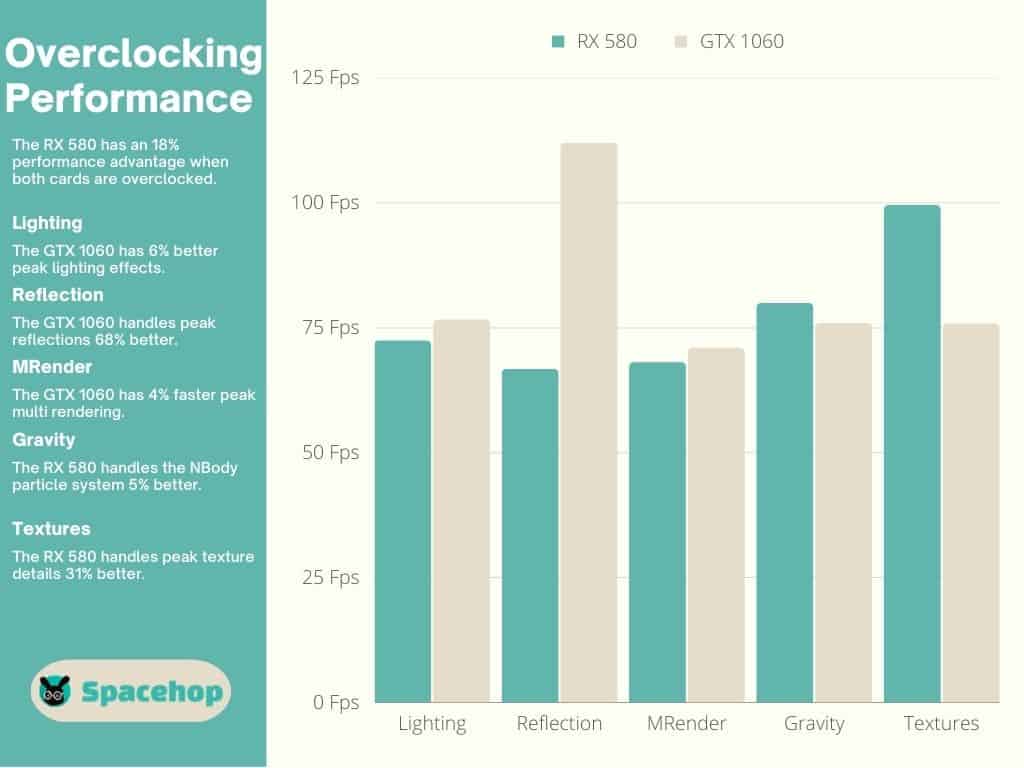
These speeds refer to the Founders Editions of both cards, while third-party variants come factory overclocked above these speeds. If you want to overclock your card, you can do so through AMD software, Nvidia software, or third-party software such as MSI Afterburner.
Winner: GTX 1060
Read Also: How to Undervolt your CPU and GPU
Cores
The RX 580 packs almost double the cores of the GTX 1060, but they run on a lower frequency. Nevertheless, the RX 580 offers slightly better FPS performance than the GTX 1060. The RX 580 beats the GTX 1060 in TMUs as well, with 144 versus 80.
The RX 580 has 2,303 Stream Processors, which are leveraged by its shaders (generic programs) to handle lights, shadows, characters, and many other aspects critical to 3D rendering. Its 144 TMUs, or Texture Mapping Units, give users a slightly better visual experience than users of the GTX 1060 experience when gaming. This is in theory (we’ll get into EFps later on).
The GTX 1060 has 1,280 CUDA cores (Nvidia’s name for Stream processors). They work in basically the same way as AMD’s Stream Processors and are also leveraged by shaders. The GTX 1060 has only 80 TMUs, leaving it slightly behind the RX 580 in texture rendering.
Winner: RX 580
VRAM & Memory Specs
Both cards use GDDR5 VRAM. The GTX 1060 comes in two VRAM versions, 3 and 6 GB, on a 192-bit memory BUS. The RX 580 also comes in two versions, 4 and 8 GB, on a 256-bit BUS. A larger bus allows more data to be transferred to the CPU from your VRAM, meaning that the RX 580 has an advantage in the amount of data it handles with its already larger VRAM.
Winner: RX 580
Also Read: The key differences between VRAM and RAM
Performance
Advertised Fps puts the RX 580 2% ahead on average, regardless of resolution, but EFps is another matter. According to user benchmarks, average EFps is in the same 2% favor of the GTX 1060 with 8% better lighting and 26% better reflection handling. Effective speed is 4% in favor of the GTX 1060 according to those same user benchmarks.
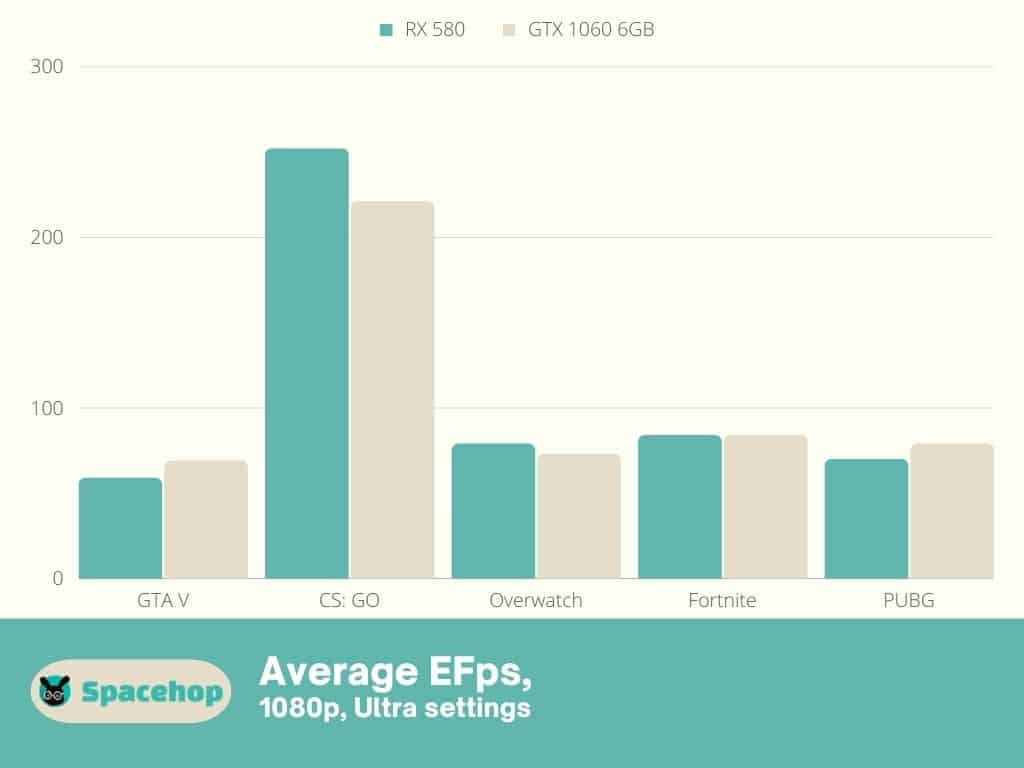

Those are average metrics, while performance often comes down to what you’re playing. Both cards do great in some games and worse in others, as is always the case when comparing AMD to Nvidia cards. What doesn’t change from game to game is that the RX 580 runs hotter than the GTX 1060 and uses more power.
Winner: RX 580
Also Read: Difference between 4K and 1080p Resolution
Connectivity
The RX 580 has one HDMI 2.0b port and three DisplayPorts. HDMI 2.0b improved upon regular HDMI 2.0, particularly in terms of 4K and HDR support. You wouldn’t think so because of its low TDP, but this card requires an additional power supply connection directly from your PSU. The FE version used a single 8-pin PSU connector.
The GTX 1060 has a regular HDMI 2.0 port and three DisplayPorts, with an additional DVI port (almost no adapters for old monitors required). Surprisingly, even though it has a TDP of only 120 W, it too requires an additional power connection to your PSU, using a 6-pin connector.
Winner: GTX 1060
TDP
If you’re looking to save on power, the GTX 1060 is the card for you. It has a TDP of only 120 W, meaning any run-of-the-mill PSU with 300 W can run it. The RX 580 has a TDP of 180 W and requires a 450 W PSU (still run-of-the-mill). The RX 580, like most AMD cards, runs 5-10°C (41-50°F) hotter than its Nvidia counterpart, especially when handling high loads.
Winner: GTX 1060
RX 580 vs GTX 1060 – Standout Features
Nvidia DirectX Raytracing support stands out in this comparison, as the AMD RX 500 series never got around to this update. This DirectX update brought the GTX series cards one step closer to the capabilities of the RTX series.
GTX 1060 vs RX 580 – Pricing & Availability
This is where things go wrong! I’ve listed many deals for both of these cards, almost none of which are for actually new and unused cards. Almost all you can find nowadays are used and refurbished cards. While this might seem okay to some, I’d never recommend a used GPU, not in 2023, anyway.
We’re just leaving the latest crypto-mining craze behind us, and the influx of used cards comes mostly from mining operations. Think about it, those cards have constantly been working at full load, heated almost to the max, affecting their thermal pads, heatsinks, and more. So, used is out of the question, personally — especially if you compare MSRP upon release and today’s prices.
The RX 580 was released at an MSRP of $229, and the GTX 1060 was released priced at $299. Today, their prices are all over the place. I found one crazy Sapphire RX 580 example and another even more overpriced version from XFX. You can find cheaper options, though they might not be made by notable manufacturers, such as this version priced below the MSRP.
The situation is slightly different for GTX 1060 variants. You can actually find some below the original MSRP. This refurbished EVGA variant is set at a more realistic price, as is this one from ASUS and this ASUS ROG variant. If you’re on a budget, the GTX 1060 is the way to go for sure.
Then, to top it all off, I ran into an ad for a Radeon RX 6600 going for roughly the same price as the cheapest variants of both the RX 580 and the GTX 1060. Go figure.
Conclusion
So, are they worth it in 2023? Definitely not if you ask me. We are witnessing a price drop for both AMD’s and Nvidia’s newest cards (RX 6000 series and RTX 30 series), so I really don’t see why anyone in their right mind would purchase one of the available RX 580 or GTX 1060 cards nowadays. And, prices are expected to drop even further as we near the release of the RX 7000 and RTX 40 GPUs.
Nevertheless, this is an RX 580 vs GTX 1060 comparison, and I should give my verdict. Between the two, the GTX 1060 seems to be held in higher regard by users, and user benchmark tests favor the GTX card. EFPS is in the GTX’s favor, while advertised Fps is in the RX’s favor.